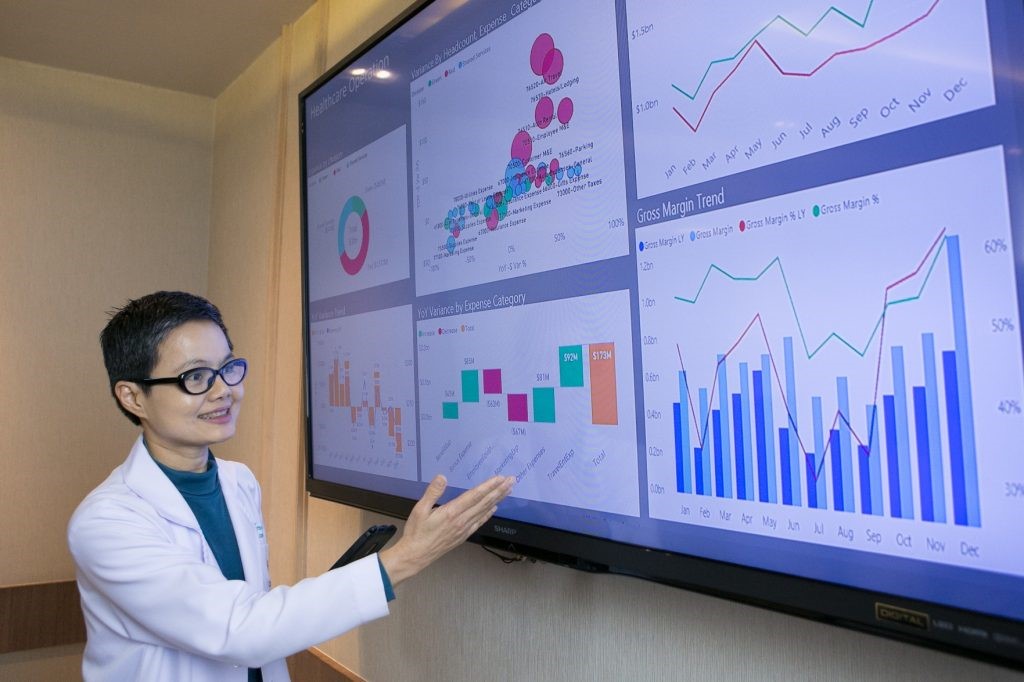
ASEAN and the cloud: Harnessing the digital dividend
What is the cloud? And, what can it do for the less developed economies of Southeast Asia?
Michael Zielenziger pauses for a moment and answers: “It’s the ultimate ‘leapfrog’ technology. It allows economies and even small companies – in, say, Indonesia or Thailand or Myanmar or elsewhere – to connect to the rest of the globe and compete. It can change the world around us and it will help shape the future.”

Zielenziger is the principal author of a new Microsoft-commissioned report that urges the region to “catapult” itself into the fourth industrial revolution by embracing cloud computing.
Entitled “Harnessing the Digital Dividend,” the report presents evidence that the time has come for enterprises and governments across ASEAN to “grab a greater share of the globe’s digital dividend.” Barriers that once prevented cloud adoption are coming down. And, while initial transition costs can still be a roadblock for some firms in emerging economies, cloud adoption can be made cost-effective by reducing maintenance expenses and increasing scalability.
“New and innovative technologies give small companies, and less developed economies, the potential to leapfrog into the knowledge economy,” the report says. “Cloud platforms represent one such technology – a new way to accelerate business growth, intensify collaboration, create global networks, and scale effectively.”
The report – by the independent economic research firm and consultancy, Oxford Economics – lays out recommendations for governments, companies and other organizations on how best to tap the transformative power and potential of the cloud. It also outlines eight cases studies of companies in Singapore, Indonesia, and Thailand that have done just that.
“Our research has shown that cloud platforms can do more than cut costs and make companies more competitive. They also establish a robust IT foundation for companies to embrace the next wave of innovations, including robotics, artificial intelligence (AI), data analytics, and the Internet of Things (IoT), to find new business models and capture new sources of revenue,” it says.
“There are few barriers keeping Southeast Asia from catapulting forward by more fully embracing cloud platforms, and little reason to think they cannot be overcome.”

The cloud can help level the playing field for both smaller enterprises and developing economies “by putting sophisticated technologies within reach while allowing users to scale up or down quickly according to market factors.”
The report describes cloud adoption as critical to economic development, greater productivity, and higher-value employment. But it also observes that progress in our part of the world has been uneven. While the Asia Pacific is regarded as strong overall in cloud readiness, there are large discrepancies among the region’s economies. It cites an Asia Cloud Computing Association index which ranks Singapore and Hong Kong as global leaders in this area, and Thailand and Indonesia as lagging behind significantly.
Zielenziger, who is Managing Editor for Thought Leadership at Oxford Economics, recently launched the report at the Lee Kuan Yew School of Public Policy at the National University of Singapore.
“You can sit in the bubble of Singapore – with its advanced technology, with its IT infrastructure, and think: ‘This is how Asia really works.’ But if you go to Medan (in Indonesia) or to Penang (in Malaysia), or to rural parts of Thailand, it isn’t quite to same,” he said. “We have to understand how heterogeneous Asia is, and how heterogeneous the relationship to the cloud in Asia is.”
There are few barriers keeping Southeast Asia from catapulting forward by more fully embracing cloud platforms

Major issues surrounding cloud adoption include the need for digital literacy training among workers and justifying the cost of replacing legacy IT systems. There are also big gaps in infrastructure. “Typically, the infrastructure conversation is about roads and bridges. But in the future, it has got to be about the internet’s backbone. It has got to be about uninterrupted power supplies. It has got to be about broadband connectivity,” he said.
Some older enterprises and bureaucracies should let go of traditionally held suspicions about data security in the cloud. Similarly, some governments should revisit data sovereignty regulations and laws.
It is not just about efficiency and productivity and tweaking this or tweaking that. We are transforming what organizations do.
“For countries in Asia that are trying to get up the technology chain, the ability to collaborate offshore with specialists and companies is a way to leverage your talents and your budgets,” he said. While he acknowledged the political considerations involved, “Data sovereignty rules could really stand in the way of being able to use to maximum effect the transformational and catalytic impacts of cloud technology.”

Dr. Astrid S. Tuminez, Microsoft’s regional director for Corporate, External and Legal Affairs for Southeast Asia, said that after decades of strong economic growth the region as a whole is moving to the cloud and will see fundamental changes.
“It is not just about efficiency and productivity and tweaking this or tweaking that. We are transforming what organizations do,” she said at the launch event.
Tuminez cited another recent Microsoft-commissioned study that predicted cloud-backed digital transformation will boost regional gross domestic product (GDP), help deliver better urbanization, and lead to higher value jobs, better incomes, and upskilling across the workforce. She also noted some challenges ahead.
“At the end of the day when we think about technology and all these changes, what we would also like to know is that this is not just going to lead to new inequalities or new problems.”
READ the full report and case studies
ALSO READ: Digital transformation in emerging Asian economies: Escaping the middle-income trap













